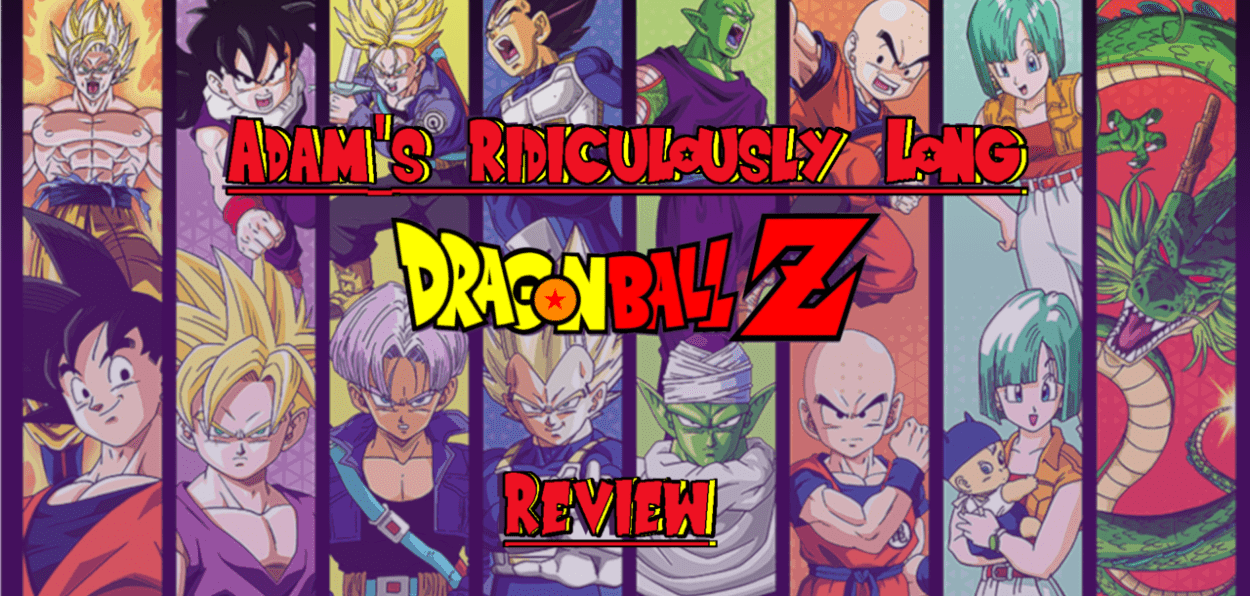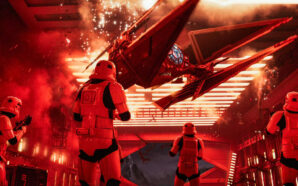How do you top the climactic battle that ended Season One? You take things into space! Thus Season Two takes us to the Planet Namek for the Namek Saga & The Ginyu Force Saga. (Those might not be the “official” saga names but this is how I’m breaking them up logically, so don’t @ me about this specifically, thank you) That’s right, this season has two distinct sagas, both taking place on Planet Namek, so I’m going to cover them in turn. One is better than the other purely because it is more focused and doesn’t have any real dips while the other does – can you guess which is which? Let me know if you guessed correctly on Twitter @APTSnack.
The Season starts off slowly, getting to Planet Namek takes a few episodes for Bulma, Krillin & Gohan. The fun side show and “road trip” vibe of those episodes vanishes almost as soon as they set foot on the real Planet Namek. They are there searching for the Namekian Dragon Balls so they can undo the damage done by the Saiyans in Season One but they quickly discover that they aren’t the only ones on the hunt. Frieza is already on the planet terrorising & killing any Namekians they find during their search. Vegeta then arrives there almost at the same time as the gang from Earth. This sets in motion a compelling game of cat and mouse as the three groups try to out manoeuvre each other with the weaker parties trying to avoid being detected or caught while all of them search for the same 7 magical wish granting balls. Again the characterisation really comes through during this period as the events unfold naturally. Krillin & Gohan blow their cover by stepping in to save a Namekian child who was about to be killed as they watched from nearby. Vegeta’s pride, arrogance & belief in his own abilities leads him to both crushing victories and humiliating defeats. At every turn he seeks a way to twist events to his advantage with varying degrees of success.
Unfortunately the saga drags in places as there are some unnecessary “side-quests” added in that don’t really add much other than to give certain characters something to do and fill time. I don’t know if they are strictly “filler” episodes as I’ve not actually read the manga but I’m confident that you wouldn’t lose anything really by removing them entirely. Which is a shame because I’d like to see Bulma, in particular, being more involved in the events as they play out rather than being relegated to these less important “side quests”. Though she isn’t a fighter, she’s probably the smartest character in the whole series and is more than capable of contributing to the narrative in that way but doesn’t often get a chance to shine.
Eventually events take an unexpected turn and an uneasy alliance between Vegeta & the Earthlings is formed as a new threat arrives. The Ginyu Force, a 5 person team with individuals who are as strong, or stronger, than Vegeta. Vegeta himself is more powerful now than he was during the battle on Earth but not powerful enough to take on these 5 alone. The Ginyu’s are as much about style as they are substance and bring an added panache to go with the despicable and brutal acts they perpetrate. Goku, having left after the others, arrives while the fight with the Ginyu’s is still happening and is able to help. It isn’t a moment too soon either. Dragon Ball is a series famous for its fight sequences and it’s easy to see why during this season. If the end of the Saiyan Saga wasn’t enough to convince you then there are some corkers in here. Short or long, each fight has an interesting dynamic to them. The standout moment in this Season for me isn’t from a battle, though there are some good ones to pick from. No, in this one it’s an event that happens early on. When Gohan steps up and saves the young Namekian named Dende. It’s incredibly reckless but equally brave. It shows a tremendous amount of growth in the youngsters character in such a short space of time.
Episode 68, which is near the end of the season, is the first Bruce Faulconer scored episode. That’s right, up til now they’d been using different music entirely and it wasn’t until this point that Mr Faulconer was brought on to do the music. In fact, Episode 68 is the first episode that Funimation dubbed themselves using their own actors. It wasn’t until years later that Sean Schemmel & Chris Sabbat et al would get the chance to go back and dub the prior 67 episodes to give the series a consistent voice cast all the way through its run. Like I said in an earlier article, it was a bit of a mess initially but the good news is that the music is consistent from here on out; It’s Faulconer all the way to the end in 200 or so episodes. Or, if you’re listening to the Kikuchi score, it was and has been consistent and will remain so.
I’m going to take a moment here to talk about some of the flaws with Dragon Ball Z. It lacks diversity of race, features problematic sexist behaviours and treats female characters rather poorly at times. Bulma being an excellent example of this. As I mentioned she is easily one of the most intelligent character in the series but is often treated poorly in the story, with her being side-lined or given frivolous tasks on Namek that don’t really add anything. Chi Chi is insufferable at times as an overbearing cliché of an overprotective mother. Master Roshi is a complete pervert which anyone familiar with Brock from Pokémon will know is an unfortunately common trope in anime. Mr Popo’s design is racist in nature as it is informed/influenced by caricature designs that were common from Disney and the like in the past and were used as inspiration for the design. I don’t think it’s intended to be racist, certainly the characterisation isn’t in any way, but that doesn’t excuse the visual design in the here and now. Okay, it was made in a different time, there are plenty of reasonable reasons why Bulma was sidelined at this time in the story, why Mr Popo is designed the way he is and so on. There’s always an excuse for this sort of thing, so I think it is important to note these issues with the series. Times change, progress is made and it’s incumbent on all of us to take note. It’s still an incredible series, that hasn’t changed, but it’s important to recognise where the stuff we love is lacking when viewed from the present day.
To round things out, I’d also like to mention a highly welcome but unexpected feature of the 30th Anniversary Blu-Rays, Marathon Play. It’s Blu-Ray’s answer to Netflix’s auto-play and intro skip. You get the first intro and recap of prior events then it just plays the episodes. You know where each episode ends as you get the narrator giving his hype for the next episode then bam, you’re into it. The only thing it doesn’t do is play the end credits at the end of the last episode on the disk; but that’s a minor complaint. It’s possibly the best thing about the whole set and absolutely justifies the price all on its own. All several hundred pounds of it.
Yes… definitely.
Will I continue to shamelessly mine this beloved series for content to justify the purchase to myself? Who will get to make their wishes when the Dragon Balls are finally gathered? Find out in my next article about Dragon Ball Z. And don’t forget that you can purchase the beautifully remastered Blu-Ray’s as individual seasons from Manga UK.








